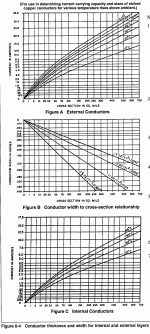theRealFury
10 kW
Guys,
Im in the process of designing the wiring for my new setup and realised that i have no real idea as to what amperage you can safely run on what guage of wire. I have had a look arround but seem to find conflicting numbers on sites. Is there a rule of thumb or a defined way of working this out? I have a lot of 12awg silicone wire sat arround here but no idea weather it would cope with my intended setup of 12s lipo and 50amps controller, i suspect not but just having some figures to go on would help me alot. Any of you guys have the knowledge or a link to somewhere that can answer these questions?
Cheers
Im in the process of designing the wiring for my new setup and realised that i have no real idea as to what amperage you can safely run on what guage of wire. I have had a look arround but seem to find conflicting numbers on sites. Is there a rule of thumb or a defined way of working this out? I have a lot of 12awg silicone wire sat arround here but no idea weather it would cope with my intended setup of 12s lipo and 50amps controller, i suspect not but just having some figures to go on would help me alot. Any of you guys have the knowledge or a link to somewhere that can answer these questions?
Cheers


